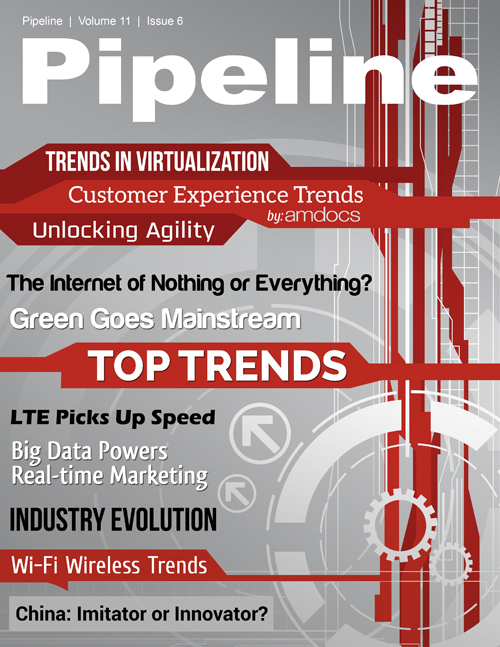The Internet of Nothing or the Internet of Everything? IoT Needs Network Performance Management to Thrive
Building a web of interconnected devices without paying due consideration to the networks that facilitate the connections between them is like preparing a three-course meal, inviting a group over to eat, but then realizing the oven doesn't have enough room for all the food. The supporting infrastructure cannot be taken for granted.
Think about some of the more popular IoT devices, such as street cameras, connected cars and fitness trackers – while some of them generate a limited amount of data traffic, what makes them high bandwidth is that they're "always on". They require constant connectivity and a large amount of bandwidth to maintain a consistently strong quality of service (QoS) for their users. Connected devices would lose a lot of their appeal if they were constantly dropping off networks, hindering the customer experience. To prevent inconsistent uptime, networks must perform optimally for all applications, and that responsibility rests with CSPs.
The value of end-to-end network performance management
The first hurdle for CSPs to overcome, as they support the growth of the IoT, is to streamline their traditionally piecemeal approach to network performance management. Today's networks are deeply fragmented – the result of decades of mergers, acquisitions and other sporadic network expansions.
From 2001-2010, telcos spent $1.5 trillion on merger and acquisition activity, peaking in 2004-2007, when M&A activity topped $200 billion annually for each of those four years. This approach has worked well for CSPs when measured against the goals of expanding not just revenue, but also network reach and scale in order to build tomorrow’s high-speed networks.
But, it has also created a considerable challenge for CSPs in delivering optimal network performance and guaranteeing a positive end-user experience. This is due to a number of factors, chief among them the wide diversity in today’s networks, and CSPs' approach to operating and managing them. Connected devices could use any number of network technologies to communicate with one another, including Bluetooth, Wi-Fi, mobile networks and even proprietary wireless standards. In the absence of standardization, the currently fragmented network environment is near impossible for operators to efficiently manage, especially when it’s loaded with so much data.
That is the catch-22 of the Internet of Things – the more the devices multiply and diversify, the less compatible they become with one another. If the existing network landscape does not evolve along with the IoT itself, there will simply be too many network-enabled devices for CSPs to manage individual parts of the network. Instead, as they scale network capacity to accommodate for new devices, CSPs need to gain a comprehensive, end-to-end view of the entire network, and better understand how every device connects with every other.
By applying this approach, CSPs will be better able to meet the rising performance expectations of customers. And that’s no small task. Because the IoT will multiply the number of endpoints connected to networks – that number is already up to 2.7 endpoints per person – coverage area is no longer the chief concern amongst CSPs as they build out their networks. Rather, it is performance and capacity. Each new endpoint added to the IoT will further accelerate the growth in network data traffic, saddling CSPs with the burden of maintaining consistent, high-quality performance for every single Thing; and doing all of this without sacrificing the experience for every single person using the very same networks for their daily activities.
Fortunately for the CSP community, this issue has not gone unnoticed. The GSMA has been proactive in creating network traffic guidelines to help mobile operators maintain consistent performance, even as growth of the IoT spikes.
These standards are helping to lay the foundation for additional IoT growth, but it’s ultimately the responsibility of each CSP to prepare. If a CSP stands to capitalize on the IoT wave, a holistic network performance strategy will be critical. Even as ARPU inevitably drops further, real-time, streamlined, autonomous, end-to-end network performance orchestration will ensure that the IoT trend is fruitful for operators and life-changing for their customers.



















